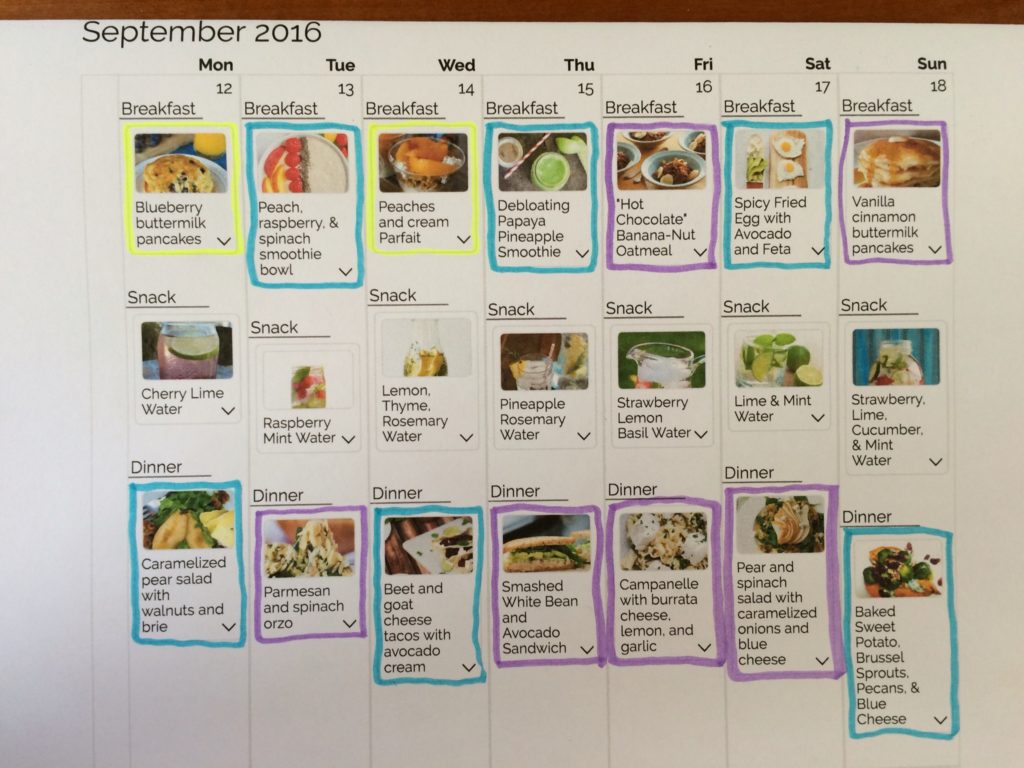When is that birthday party? Did you take care of that bill? What are we having for dinner?
There are so many communications and tasks when you’re in a family. Whether you have a family of two or ten, getting everyone on page about the basics can be exhausting. It’s gotten so bad that we’ve started joking about “adulting” on social media. Those responsibilities just expand when you’re doing it with and for others, and keeping everyone clear on what’s happening can be a challenge.
So, how do we get a whole family clear about what’s going on and who’s responsible? What if, rather than dozens of random, catch-as-catch-can chats you could just have one conversation and get everyone on page for the week ahead?
That’s why I believe that every family can benefit from establishing a weekly “Family Meeting.” A dedicated, reliable time when such conversations can be had, responsibilities can be clarified, and you can start truly pulling as a team.
Our family meetings started when Brian and I moved in together. We quickly realized that there was a benefit to sharing information about our mutual lives more consistently, so we began our Sunday morning family meetings.
The structure of our meetings has evolved over the past five years, but the meetings themselves have remained consistent. Even better, I know that he values the sense of connection and shared responsibility they create as much as I do. Now, when we miss a week (as sometimes happens for major events, travel, etc) I think we both feel the gap and work a bit harder during the following week to fill it, which underlines how useful they have become.
What Happens in a Family Meeting?
If you were going to start your own family meeting, then what might you talk about? There are dozens of topics that you could include in your family meeting discussions, everything from travel plans to birthday parties to IRA investments, but here are some key topics that you might aim to hit each week:
- Upcoming Calendar – Review the next week and glance over the next month or two for events that might require advance planning. If you’ve got kids this might include who’s on pick-up duty on different days. Or reviewing evening and weekend commitments, what’s shared and what’s separate? We use Google Calendar to access and view each other’s schedules.
- Meal Planning and Prep – When you know the upcoming calendar you can make better meals plans. What nights are you going to want something real easy and quick? When might someone be home earlier to put together that lasagna that will last as leftovers? We’ve become huge fans of GatheredTable, which I use to import my favorite recipes (mostly from Pinterest). It allows us to visually plan out meals for the week (or the month) in about 15 minutes. After we’re agreed on the plan, I print the week, use a highlighter to color-code who’s responsible for prepping each meal, and post it on our refrigerator. And, when it’s time to cook we just pull up the recipe on our kitchen tablet (my old iPad) and get started.
- Household Finances – Budget check-in, weekly spending, cash flow are all things that in the past I avoided entirely, but now my husband brings the books up to date, and we discuss upcoming bills and expenses together each week so we both know our financial status exactly. We use You Need a Budget to keep our family budget and accounts straight.
- Household Tasks – Calling the repair guy, running to the hardware store, picking up the dry cleaning or prescriptions, writing out birthday cards. There are so many little activities that keep a household functioning. What if you could review all those actions once a week rather than the constant “honey, could you…” conversations? For this we use Asana (because we’re already using it for our business, but any shared to-do list (with assignees) can work.
- Clearing the Air – Is there something that came up in the last week that needs to be addressed and resolved before it festers or becomes a major point of frustration?
- Gratitude – remembering to offer gratitude to our family members for all the little things that have made a difference can be a great way to end a family meeting.
Are there other topics that might be useful for you? Many of these are common to different families, but there might be other topics that are important to yours that you’d want to include.
Who Participates in a Family Meeting?
Definitely the adults… but it might be appropriate to include the kids too (at least for some parts of the conversation.) In fact, you might develop a Part 1/Part 2 structure where the whole family is involved in some topics and other topics are for private parental conversation after the kids have gone to bed.
Including kids in the conversation at some points will help them learn about shared responsibilities and give them more skills to become prepared for adult life in future. After all, that’s part of parenting, right?
When to Schedule your Family Meeting?
I’m a big fan of Sunday mornings right after breakfast. Everyone’s a bit more fresh, fed, and well-slept (provided you weren’t out late partying on Saturday), and it sets up the new week for success.
However, if you have other commitments on Sunday mornings, then after dinner Sunday or even on some weekday evening (Wednesday or Thursday planning for the following week perhaps) can definitely work. Find a time that generally works in your family’s weekly rhythm, and make it consistent. Not that you’ll never skip one or shift it to a different day, but it’s better when everyone knows to plan around it as much as possible.
You might even blend your meeting with a family fun night. Get the meeting done, then play a board game together or some other joyful activity.
Getting Family Buy-in
If this is a completely new idea for your family, then there’s likely an initial conversation needed to invite the other family members to get on board for this experience. In general, I’ve found that two things can make a big difference how this request or suggestion is received.
- The attitude you project when making the request – i.e. if someone came to you frustrated, whining, and making demands for your participation, would you say yes? Probably not. How might your response be different if your family member said, “I’ve been thinking about how we can simplify all our last-minute communications and support each other even better. I have an idea I’d like to kick around with you. Could we find some time to talk more about it?” Probably a lot more positive and willing, right?
- The benefits that your family member(s) will receive by joining the effort – In other words, before you talk to them, put yourself in your listener’s shoes. How will participating in this family meeting make his/her life easier? For example, fewer “what’s for dinner?” questions, ability to influence decisions more directly, less confusion about who’s picking up Jimmy from soccer, more clarity about how the family money is being spent, ability to make financial decisions proactively rather than reactively. Any of these might be important benefits that you would want to highlight during your initial conversation.
You also might try getting a soft yes by suggesting that you experiment with it for four to six weeks just to test it out. Then, after the agreed period of time you can re-evaluate if it’s working or what you might want to shift to make it work better. It’s a lot easier to get someone to agree to a smaller request rather than “I think we should do this every week for the rest of our lives.” At least… that’s my experience *wink*.
Our own family meetings have gone through regular shifts, tweaks, and transformations. We find better tools or better workflows every few months and continue to flexibly craft this ritual to fit our changing needs. As I like to say, create the shape and hold it loosely. When you allow space for it to develop and shift over time, you will know that it’s serving you even better.





Thank you for this information about the meal planner. This area is a big weakness for me. I plan to try it out and see how it goes. I will see if my family gets on board.